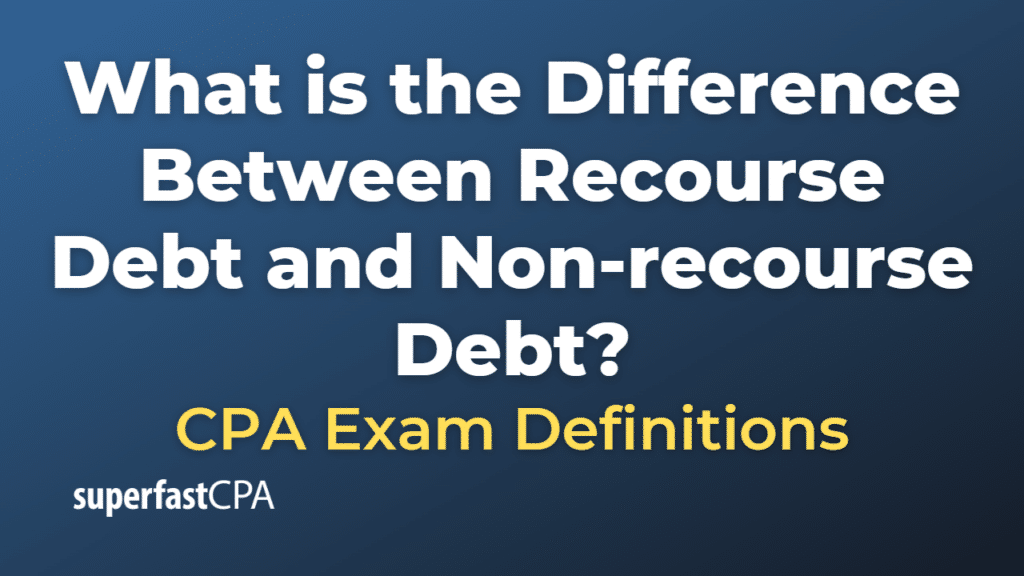Difference Between Recourse Debt and Non-recourse Debt
Recourse debt and non-recourse debt are types of loans that are distinguished by what a lender can do if a borrower defaults on the loan. The primary difference between the two lies in the extent of liability and the assets that the lender can claim in the event of a default.
- Recourse Debt:
Recourse debt gives the lender full rights to pursue the borrower’s assets (beyond just the collateral) in case of a default. This means if the collateral sold doesn’t cover the remaining loan balance, the lender can legally claim the borrower’s other assets or sue to cover the outstanding debt.The benefit to lenders is that they have more options for recouping their money if the borrower defaults. On the other hand, borrowers might get more favorable terms with recourse debt (like a lower interest rate), given the reduced risk for lenders. - Non-Recourse Debt:
Non-recourse debt limits the lender’s claims to the collateral that is securing the loan. This means if a borrower defaults, the lender can seize the collateral, but if the sale of the collateral doesn’t cover the remaining debt, the lender has no recourse to the borrower’s other assets.Non-recourse loans are riskier for lenders because they can’t pursue the borrower for additional assets if the collateral doesn’t cover the outstanding debt. Because of the higher risk to lenders, these loans might have less favorable terms for borrowers, such as higher interest rates or stricter eligibility requirements.
It’s essential for borrowers to understand the difference and the implications of recourse and non-recourse debt. The choice between the two usually depends on the borrower’s financial situation, risk tolerance, and the specific terms offered by the lender.
Example of the Difference Between Recourse Debt and Non-recourse Debt
Let’s look at a couple of hypothetical examples to illustrate the difference between recourse and non-recourse debt:
Example of Recourse Debt:
Let’s say John takes a recourse loan of $500,000 from a bank to purchase a new home. The home itself is used as collateral for the loan.
Five years down the line, John faces severe financial difficulties and defaults on his loan when he still owes $300,000. The bank then forecloses on the property, but due to a downturn in the property market, they can only sell it for $250,000.
Because John’s loan is a recourse loan, the bank can pursue John for the remaining $50,000 ($300,000 – $250,000) that wasn’t covered by the sale of the property. If John can’t pay, the bank can legally claim his other assets, or even sue him to recover the debt.
Example of Non-Recourse Debt:
On the other hand, let’s say Sarah takes out a non-recourse loan of $500,000 to buy her new home. Like John, she also faces financial hardship five years later and defaults on her loan when she still owes $300,000. The bank seizes her home and sells it, but can only get $250,000 due to market conditions.
However, unlike John’s situation, because Sarah’s loan is a non-recourse loan, the bank has no recourse to Sarah for the remaining $50,000 debt. They must absorb the loss. Sarah loses her home, but her other assets are safe from claim by the bank over this debt.
These examples illustrate the fundamental difference between recourse and non-recourse loans: the lender’s ability (or lack thereof) to pursue the borrower’s other assets in case of a default. It’s important to note that the specific terms and conditions can vary depending on the loan agreement and local regulations.













